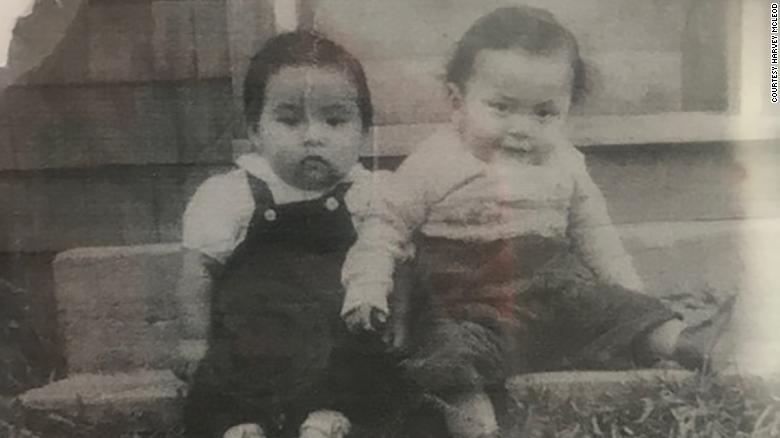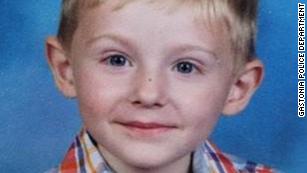Please don't ignore this news article.
By Paula Newton, CNN
Updated 8:34 PM ET, Fri May 28, 2021

The former Kamloops Indian Residential School on Thursday, May 27, in Kamloops, British Columbia, Canada. The remains of 215 children have been found buried on school's grounds, which closed in 1978.
The gruesome discovery took decades and for some survivors of the Kamloops Indian Residential School in Canada, the confirmation that children as young as 3 were buried on school grounds crystallizes the sorrow they have carried all their lives.
"I lost my heart, it was so much hurt and pain to finally hear, for the outside world, to finally hear what we assumed was happening there," said Harvey McLeod, who attended the school for two years in the late 1960s, in a telephone interview with CNN Friday.
"The story is so unreal, that yesterday it became real for a lot of us in this community," he said.
The Tk'emlúps te Secwépemc community in the southern interior of British Columbia, where the school was located, released a statement late Thursday saying an "unthinkable loss that was spoken about but never documented" was confirmed.
"This past weekend, with the help of a ground penetrating radar specialist, the stark truth of the preliminary findings came to light -- the confirmation of the remains of 215 children who were students of the Kamloops Indian Residential School," said Chief Rosanne Casimir of the Tk'emlúps te Secwépemc community.
"To our knowledge, these missing children are undocumented deaths," she said in the statement.
Enter your email to sign up for the CNN Ten newsletter.
"close dialog"
For decades, McLeod says he and former students like him would wonder what had happened to friends and classmates.
"Sometimes people didn't come back, we were happy for them, we thought they ran away, not knowing if they did or whatever happened to them," said McLeod, who now serves as chief of British Columbia's Upper Nicola band.
"There were discussions that this may have happened, that they may have passed," he says adding, "What I realized yesterday was how strong I was, as a little boy, how strong I was to be here today, because I know that a lot of people didn't go home."
The Kamloops Indian Residential school was one of the largest in Canada and operated from the late 19th century to the late 1970s. It was opened and run by the Catholic Church until the federal government took it over in the late 1960s.

Harvey McLeod attended Kamloops in the late 1960s. He said the school scarred generations of First Nation members.
It closed permanently about a decade later and now houses a museum and a community facility with both cultural and memorial events.
Community leaders say the investigation will continue in conjunction with the British Columbia Coroner's Office and that community and government officials will ensure the remains are safeguarded and identified. Chief coroner Lisa Lapointe issued a statement saying that her office is early in the process of gather information.
"We recognize the tragic, heartbreaking devastation that the Canadian residential school system has inflicted upon so many, and our thoughts are with all of those who are in mourning today," she said.
In 2015 Canada's Truth and Reconciliation Commission released a report detailing the damaging legacy of the country's residential school system. Thousands of mostly indigenous children were separated from their families and forced to attend residential schools.
The report detailed decades of physical, sexual and emotional abuse suffered by children in government and church run institutions.
'Horrific chapter in Canadian history'
"The news that remains were found at the former Kamloops residential school breaks my heart - it is a painful reminder of that dark and shameful chapter of our country's history. I am thinking about everyone affected by this distressing news. We are here for you," Canadian Prime Minister Justin Trudeau tweeted Friday.
In an interview with CNN, Carolyn Bennett, Canada's minister of Crown-Indigenous Relations, says this revelation speaks to all Canadians about a "very painful truth" and a "horrific chapter in Canadian history."
"This was the reason why five of the calls to action of the Truth and Reconciliation Commission wanted us to deal with the missing children and the unmarked graves because they knew there was much more than what they had been able to ascertain at the hearings," said Bennett.
The commission recommended 94 calls to action as remedy and healing. Indigenous rights' groups says very few of them have been acted upon, including the need for health and educational equity between indigenous and non-indigenous children.
In 2019, Trudeau said he and his government accepted the harm inflicted on indigenous peoples in Canada amounted to genocide, saying at the time that the government would move forward to "end this ongoing tragedy."
McLeod says the residential school system scarred generations in his family and the abuse he suffered at the school in Kamloops terrorized him, his family and his classmates.

A childhood photo of Harvey McLeod, at left.
"The abuse that happened to me was physical, yes, was sexual, yes, and in 1966 I was a person that didn't want to live anymore, it changed me," said McLeod, comparing the trauma he suffered to that of a prisoner of war.
He says he entered the school in 1966 along with most of his siblings.
"Seven of us went at the same time, same school that my mum and my dad went to, there wasn't an option, it was a requirement, it was the law. And I can only imagine what my mom and my dad, how they felt, when they dropped some of us there knowing what they experienced at that school," he said.
As was documented by the Truth and Reconciliation Commission, many of the children in residential schools did not receive adequate medical care with some dying prematurely of diseases like tuberculous.
The commission estimates that more than 4,000 children died while at residential schools over a period of several decades, but the final commission report acknowledges it was impossible to know the true number.
McLeod says this week's discovery at his former school has already helped community members he knows discuss the abuse they suffered and the inter-generational trauma it has caused.
He says he would like to be engaged in healing and now wants to avoid pointing fingers or blame.
"I have forgiven, I have forgiven my parents, I have forgiven my abusers, I have broken the chain that held me back at that school, I don't want to live there anymore but at the same time make sure that the people who didn't come home are acknowledged and respected and brought home in a good way," he said.
(CNN)The gruesome discovery took decades and for some survivors of the Kamloops Indian Residential School in Canada, the confirmation that children as young as 3 were buried on school grounds crystallizes the sorrow they have carried all their lives.
"I lost my heart, it was so much hurt and pain to finally hear, for the outside world, to finally hear what we assumed was happening there," said Harvey McLeod, who attended the school for two years in the late 1960s, in a telephone interview with CNN Friday.
"The story is so unreal, that yesterday it became real for a lot of us in this community," he said.
The Tk'emlúps te Secwépemc community in the southern interior of British Columbia, where the school was located, released a statement late Thursday saying an "unthinkable loss that was spoken about but never documented" was confirmed.
"This past weekend, with the help of a ground penetrating radar specialist, the stark truth of the preliminary findings came to light -- the confirmation of the remains of 215 children who were students of the Kamloops Indian Residential School," said Chief Rosanne Casimir of the Tk'emlúps te Secwépemc community.













